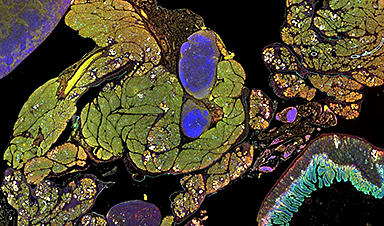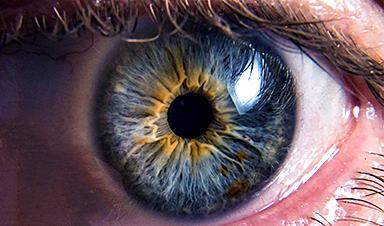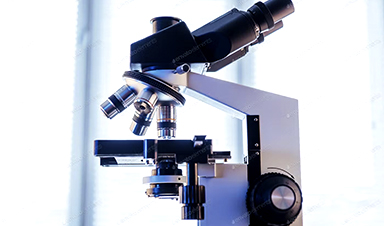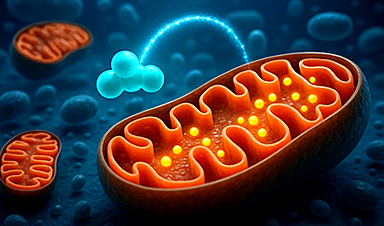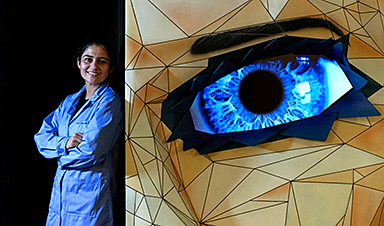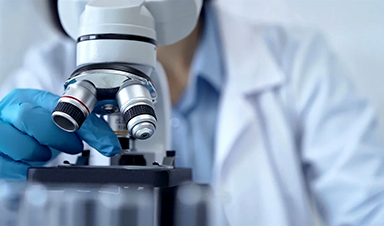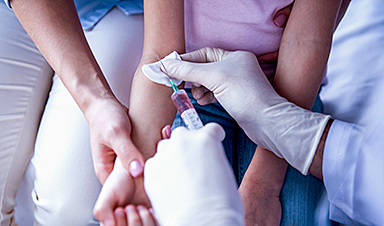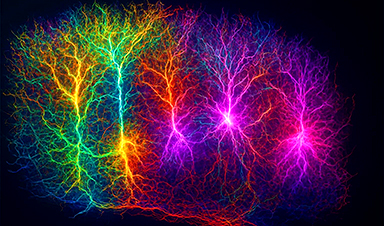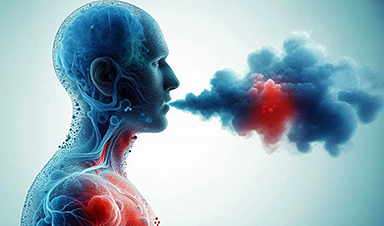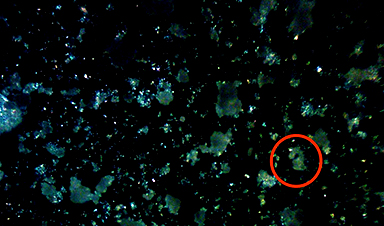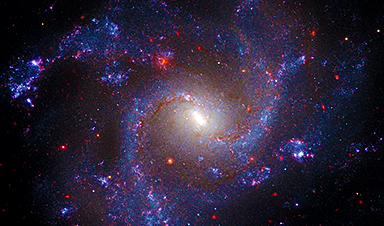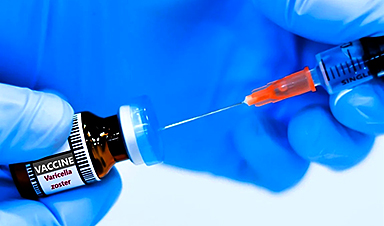Longer-Term Projects

Vascular Cartographic Scanning Nanodevice (VCSN)
Frank Boehm’s book Nanomedical Device and Systems Design, Challenges, Possibilities, Visions endeavors to explore and present concepts for advanced nanomedical components, devices, and systems that may emerge over the next ~10-30 years. One of these nanodevices is called the Vascular Cartographic Scanning Nanodevice (VCSN) (Figure 1), which would be manifest as an autonomous, ~1 micron in diameter nanomedical device.
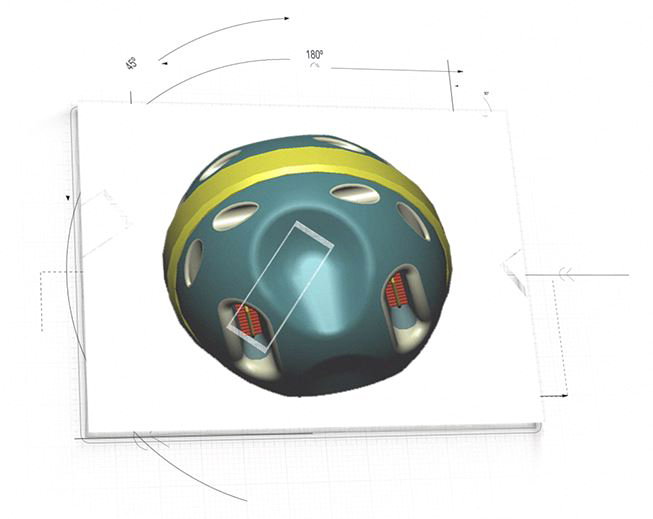
Figure 1: Artistic representation of conceptual Vascular Cartographic Scanning Nanodevice (VCSN)
Up to perhaps many thousands, or tens of thousands of VCSN nanodevices might be introduced into the patient intravenously, via ingestion as a pill, through inhalation, transdermally using a patch, or migrate in vivo utilizing a topical gel. Once within the patient their purpose would be to rapidly scan the entire human vasculature down to the smallest capillary lumen (~3 microns in diameter) in ultrahigh-resolution (sub-micron) three-dimensional (3D) digitized format. At all times they would be under the complete control of the surgeon or physician via “outbody” computer commands. Some of the capabilities of the VCSN are listed below:
- Capable of generating a very high-resolution (under 1 micron) 3D rendering of the complete human vasculature down to the smallest capillaries. It may also be applied to the imaging of the lymphatic system, and in a simplified form, the gastrointestinal tract, using a Gastrointestinal Micro Scanning Device (GMSD), (see description below).
- Ability to distinguish vascular and neurological plaque deposits and lesions with high accuracy.
- Capacity to determine vascular wall thicknesses, along with the identification and highlighting of any “hot spot” sites within the vasculature, such as imminent blockages or aneurysms that are at risk of rupturing.
- Surgeon and physicians would be able to “fly-through” all scanned areas via a joystick and computer display for the highly detailed inspection of any desired site within the system. The acquired spatial data from the VCSN may also enable holographic rendering and virtual travel through all imaged systems.
- Ability to facilitate the targeting of tumors by revealing sites of angiogenesis in close proximity to tumor growth sites.
A number of advantages of the VCSN include:
- High compactness and portability as its operation will require a relatively small footprint. This would enable a simple and quick setup and power-up procedures, which will be a boon for applications in developing countries and remote terrestrial environments.In aerospace, it might be utilized as an element of an on board medical diagnostics suite on military and medical aircraft.
- For space travel, it may be reconfigured for integration into spacesuits and spacecraft, and provide a compact yet very powerful medical imaging capability for future Moon and Mars habitats.
- Frugal energy consumption.
- Inexpensive administration and operation
- Rapid scanning time (~5 minutes).
- Ultrahigh resolution digital imagery and inherent flexibility for display across several formats and ease of file transmission to medical personnel globally via secure telecommunications connectivity
- Potential for enabling the significant reduction or elimination of long waiting queues for critical imaging technologies.
Gastrointestinal Micro Scanning Device (GMSD)
The Gastrointestinal Micro Scanning Device (GMSD) (Figure 2) will serve as far less complex precursor to the VCSN as it will not have the capacity for propulsion or navigation. It might, however, employ nascent forms of quantum computing, nanoelectronics, spatial data acquisition, and Pixel Matrix (see below) technologies that are envisaged for the VCSN. Hence, in addition to serving as formative in vivo spatial data acquisition device, the GMSD may also have utility as a test bed of sorts that is employed to identify and resolve technical, integrative, and functional issues toward the development of the VCSN.
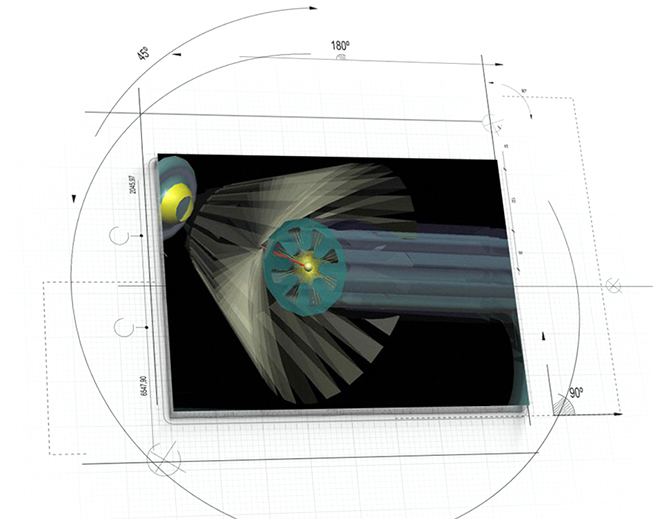
![]()
Figure 2: Artistic representation of conceptual Gastrointestinal Micro Scanning Device (GMSD)
The GMSD system will consist of three distinct components that work in unison to generate very high-resolution 3D topography of the entire internal surface of the GIT. The GMSD would accomplish this task by utilizing:
- Bright Ball (BB) scanning device, which would have a smooth spherical morphology of ~3 mm in diameter
- Pulse Generator/Data Transfer (PGDT) unit would trigger the activity of the internalized BB device via a specifically encrypted signal. The BB would be activated to scan subsequently to receiving this specific signal only. Once activated, the BB would commence to transmit a constant spatial data stream to the PGDT, which would serve as a data transfer device when linked to a computer and the Pixel Matrix (see below) software. The PGDT would be securely affixed to the patient’s abdominal surface and would stay in place for the duration of the scan.
- The Pixel Matrix display would process the PGDT supplied spatial data toward the reconstruction a high resolution “pixel per hit” 3D rendering of the total scanned area of the GIT that has been traversed by the BB. This software would enable “fly-through” and cross-sectional capabilities, allowing medical personnel to traverse the entire GIT (using a joystick, computer mouse, or touch screen display) to investigate any potential problem areas in great detail. The spatial data might also be converted to holographic and virtual reality formats. Using this procedure, the physician and/or surgeon would thus recognize any anomalous topography that is associated with tumor growth, lesions, and other abnormal features that may exist within the GIT.
The operational procedure for the GMSD would be relatively simple to implement, as the BB would be introduced orally to the patient in the same manner as a pill. Subsequently, an adhesive waterproof thin film PGDT patch would be affixed to the skin of patient’s abdomen. At this juncture, a system calibration would be performed to ensure that the communication link between the BB and the PGDT is functioning properly. An initial test scan would also be conducted in order to configure the image resolution. The PGDT would emit a unique pulsed signal (e.g., ultrasonic, near-infrared), which when received by sensors embedded within the surface of the BB would trigger all of the embedded emitters/receivers to fire and emit their scanning beams simultaneously in every direction. Once these procedures are completed the patient would be allowed to leave the physician’s office, clinic, or hospital to go about his/her normal routine. The internalized BB would now move along with the natural peristaltic rhythms of the GIT and be naturally eliminated at the conclusion of the transit duration. The patient would then return to the facility in two or three days (contingent on the assessed GIT transit time) to have the PGDT patch removed.
During the designated scanning period, the PGDT will have been continuously uploading spatial data provided by the BB, which would then be interfaced with a computer via a USB port to stream all of this data to the PM software housed within the computer. The data would now be translated to high-resolution 3D imagery on a display. The PM software would calculate BB orientation and would correlate the interrogating hits obtained within predetermined parameters to construct a cross section of the GIT to depict its internal topography. These digitized fragments would then be sequentially pieced together to form a seamless spatially accurate rendering of the system.
News
Scientists May Have Found a Secret Weapon To Stop Pancreatic Cancer Before It Starts
Researchers at Cold Spring Harbor Laboratory have found that blocking the FGFR2 and EGFR genes can stop early-stage pancreatic cancer from progressing, offering a promising path toward prevention. Pancreatic cancer is expected to become [...]
Breakthrough Drug Restores Vision: Researchers Successfully Reverse Retinal Damage
Blocking the PROX1 protein allowed KAIST researchers to regenerate damaged retinas and restore vision in mice. Vision is one of the most important human senses, yet more than 300 million people around the world are at [...]
Differentiating cancerous and healthy cells through motion analysis
Researchers from Tokyo Metropolitan University have found that the motion of unlabeled cells can be used to tell whether they are cancerous or healthy. They observed malignant fibrosarcoma cells and [...]
This Tiny Cellular Gate Could Be the Key to Curing Cancer – And Regrowing Hair
After more than five decades of mystery, scientists have finally unveiled the detailed structure and function of a long-theorized molecular machine in our mitochondria — the mitochondrial pyruvate carrier. This microscopic gatekeeper controls how [...]
Unlocking Vision’s Secrets: Researchers Reveal 3D Structure of Key Eye Protein
Researchers have uncovered the 3D structure of RBP3, a key protein in vision, revealing how it transports retinoids and fatty acids and how its dysfunction may lead to retinal diseases. Proteins play a critical [...]
5 Key Facts About Nanoplastics and How They Affect the Human Body
Nanoplastics are typically defined as plastic particles smaller than 1000 nanometers. These particles are increasingly being detected in human tissues: they can bypass biological barriers, accumulate in organs, and may influence health in ways [...]
Measles Is Back: Doctors Warn of Dangerous Surge Across the U.S.
Parents are encouraged to contact their pediatrician if their child has been exposed to measles or is showing symptoms. Pediatric infectious disease experts are emphasizing the critical importance of measles vaccination, as the highly [...]
AI at the Speed of Light: How Silicon Photonics Are Reinventing Hardware
A cutting-edge AI acceleration platform powered by light rather than electricity could revolutionize how AI is trained and deployed. Using photonic integrated circuits made from advanced III-V semiconductors, researchers have developed a system that vastly [...]
A Grain of Brain, 523 Million Synapses, Most Complicated Neuroscience Experiment Ever Attempted
A team of over 150 scientists has achieved what once seemed impossible: a complete wiring and activity map of a tiny section of a mammalian brain. This feat, part of the MICrONS Project, rivals [...]
The Secret “Radar” Bacteria Use To Outsmart Their Enemies
A chemical radar allows bacteria to sense and eliminate predators. Investigating how microorganisms communicate deepens our understanding of the complex ecological interactions that shape our environment is an area of key focus for the [...]
Psychologists explore ethical issues associated with human-AI relationships
It's becoming increasingly commonplace for people to develop intimate, long-term relationships with artificial intelligence (AI) technologies. At their extreme, people have "married" their AI companions in non-legally binding ceremonies, and at least two people [...]
When You Lose Weight, Where Does It Actually Go?
Most health professionals lack a clear understanding of how body fat is lost, often subscribing to misconceptions like fat converting to energy or muscle. The truth is, fat is actually broken down into carbon [...]
How Everyday Plastics Quietly Turn Into DNA-Damaging Nanoparticles
The same unique structure that makes plastic so versatile also makes it susceptible to breaking down into harmful micro- and nanoscale particles. The world is saturated with trillions of microscopic and nanoscopic plastic particles, some smaller [...]
AI Outperforms Physicians in Real-World Urgent Care Decisions, Study Finds
The study, conducted at the virtual urgent care clinic Cedars-Sinai Connect in LA, compared recommendations given in about 500 visits of adult patients with relatively common symptoms – respiratory, urinary, eye, vaginal and dental. [...]
Challenging the Big Bang: A Multi-Singularity Origin for the Universe
In a study published in the journal Classical and Quantum Gravity, Dr. Richard Lieu, a physics professor at The University of Alabama in Huntsville (UAH), which is a part of The University of Alabama System, suggests that [...]
New drug restores vision by regenerating retinal nerves
Vision is one of the most crucial human senses, yet over 300 million people worldwide are at risk of vision loss due to various retinal diseases. While recent advancements in retinal disease treatments have [...]
Shingles vaccine cuts dementia risk by 20%, new study shows
A shingles shot may do more than prevent rash — it could help shield the aging brain from dementia, according to a landmark study using real-world data from the UK. A routine vaccine could [...]
AI Predicts Sudden Cardiac Arrest Days Before It Strikes
AI can now predict deadly heart arrhythmias up to two weeks in advance, potentially transforming cardiac care. Artificial intelligence could play a key role in preventing many cases of sudden cardiac death, according to [...]
NanoApps Medical is a Top 20 Feedspot Nanotech Blog
There is an ocean of Nanotechnology news published every day. Feedspot saves us a lot of time and we recommend it. We have been using it since 2018. Feedspot is a freemium online RSS [...]
This Startup Says It Can Clean Your Blood of Microplastics
This is a non-exhaustive list of places microplastics have been found: Mount Everest, the Mariana Trench, Antarctic snow, clouds, plankton, turtles, whales, cattle, birds, tap water, beer, salt, human placentas, semen, breast milk, feces, testicles, [...]
